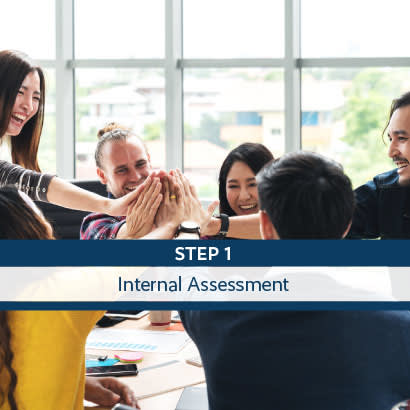Before starting the master planning process, lay the foundation for the vision and mission of your agency and the plan. Then, assess your capacity and understand what your agency needs to work with the community, elected officials and others in the development and approval of the plan.
Setting Mission & Vision
Mission - Defines why your organization exists and why it is important. This concise explanation describes the organization’s purpose and direction.
Vision - Declares what your organization wants to be in the future. Creates a mental image of what state the organization wishes to achieve. Should be inspirational and aspirational to galvanize employees.
Mission and vision statements ensure clear priorities and sense of direction for your agency. This can help guide strategic planning, establish a goal-oriented culture, and communicate agency purpose and goals to outside stakeholders.
Clarifying and/or revisiting your agency mission and vision will give a better idea of the direction and priorities for your master plan. It is important that your agency’s values and commitment to equity are included in these statements, as they will steer not only the plan but your agency priorities and ensure parks provide the most benefit to communities.
Staff Park Planners & Developers vs. Consultants
It can be beneficial in the long run to hire staff with skills in GIS, landscape architecture, community engagement and/or planning to do the baseline work rather than hiring a consultant. These staff members can then implement the strategies set in the master planning process and continue measuring progress.
If you hire a consultant, start by defining the role of the consultant vs. staff and who will manage the consultant. Park planning consultants can cover everything from collecting baseline data and leading community engagement to developing the entire plan. Understanding each other’s role can save time and money. If you decide to hire a consultant, build in time for the open request for proposals (RFP) to ensure an equitable hiring process. The RFP process alone can take 6 months to complete and data collection can take up to a year.
An alternative approach to an RFP is establishing an as-needed list of consultants through a Request for Statement of Qualifications (RFSQ). This provides your agency with a list of consultants that can be used throughout various portions of the planning stages and projects in the future.
The County of Los Angeles RFSQ can be used as an example of this process.
Leadership
It is vital to get stakeholders and elected officials to buy in to the project. Engaging elected officials early and throughout the process will help gain buy-in. Once the master plan goes to the approval process, they already will be aware of this and supportive.
Partnerships
Partnerships with other government agencies, nonprofits and businesses can help align the goals and vision of the plan with that of other organizations and create coordinated community-wide planning. Collaboration with partners can also help you leverage resources down the road, including to purchase land, co-manage or maintain projects, implement priority action steps or create a foundation for fundraising opportunities. Make sure you include partners that represent diverse communities.
Steering Committee – Community Level Approach
A system-wide master plan steering or advisory committee is a beneficial mechanism for ensuring partners and community members regularly provide input into the process. This committee should act as a cross-section of the community and should represent many interests. Committees can help bring new ideas to the table and make certain all communities have equitable decision-making power.
Technical Advisory Committee – Departmental Approach
A Technical Advisory Committee consists of other local government agencies that coordinate and collaborate on projects. Similar to the steering committee, this committee connects various functions within local government to bring forth new ideas and ensure all aspects of the community are being considered. This group can comprise of local government planning, public works, public health and transportation, among others.
 Case Study: With a focus on equity and access, Lewisville, Texas, included both internal and external roles throughout the planning process. The steering committee helped in determining priorities and goals to reach high need areas that lack access. For more information, check out the “Planning Process” section.
Case Study: With a focus on equity and access, Lewisville, Texas, included both internal and external roles throughout the planning process. The steering committee helped in determining priorities and goals to reach high need areas that lack access. For more information, check out the “Planning Process” section.


